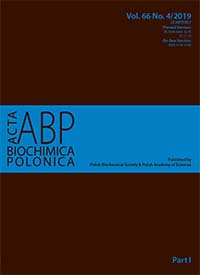Internal force field in selected proteins
Abstract
The fuzzy oil drop model suggests that the tertiary conformation of a protein – particularly a globular one – can be likened to a spherical micelle. During the folding process, hydrophilic residues are exposed on the surface, while hydrophobic residues are retained inside the protein. The resulting hydrophobicity distribution can be mathematically modeled as a 3D Gaussian. The fuzzy oil drop model is strikingly effective in explaining the properties of type II antifreeze proteins and fast-folding proteins, as well as a vast majority of autonomous protein domains. This work aims to determine whether similar mechanisms apply to other types of nonbonding interactions. Our analysis indicates that electrostatic and van der Waals forces do not conform to the Gaussian pattern. The study involves a reference protein (titin) which shows a high agreement between the observed distribution of hydrophobicity and the theoretical (Gaussian) distribution, a selection of amyloid structures derived from the Protein Data Bank, as well as transthyretin – a protein known for its susceptibility to amyloid transformation.
Acta Biochimica Polonica is an OpenAccess quarterly and publishes four issues a year. All contents are distributed under the Creative Commons Attribution-ShareAlike 4.0 International (CC BY 4.0) license. Everybody may use the content following terms: Attribution — You must give appropriate credit, provide a link to the license, and indicate if changes were made. You may do so in any reasonable manner, but not in any way that suggests the licensor endorses you or your use.
Copyright for all published papers © stays with the authors.
Copyright for the journal: © Polish Biochemical Society.


